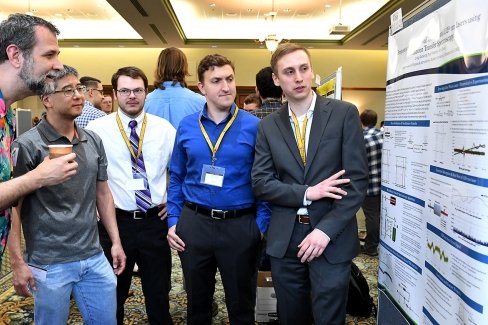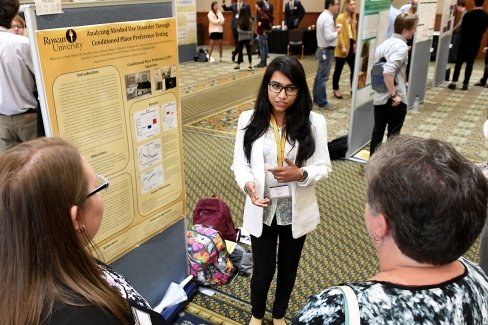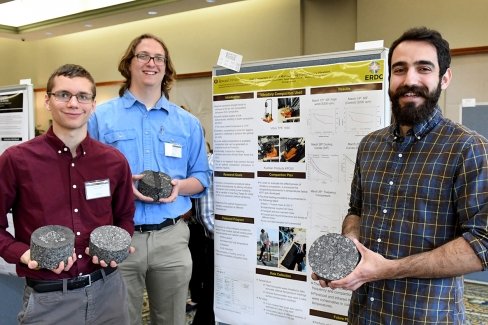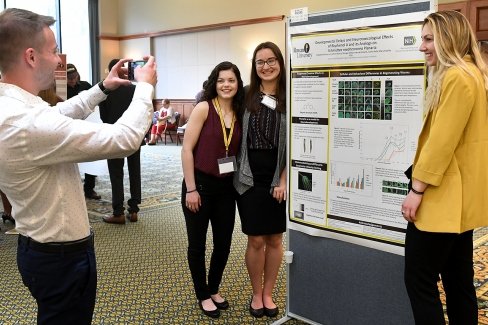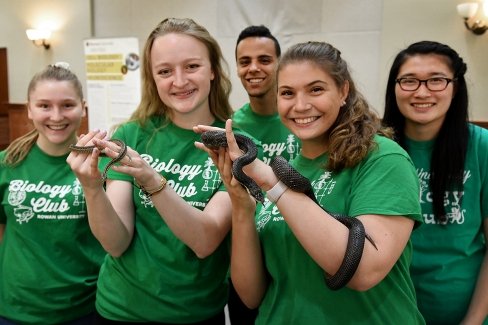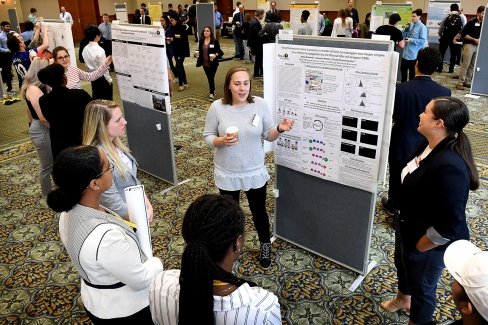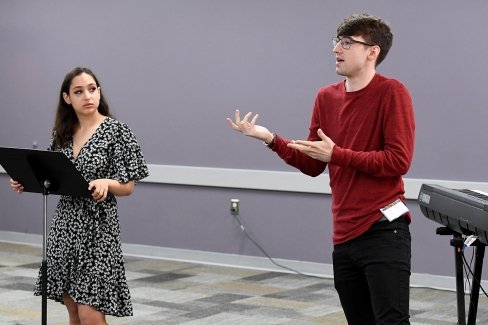RUSSS celebrates student research with more than 200 poster presentations
RUSSS celebrates student research with more than 200 poster presentations
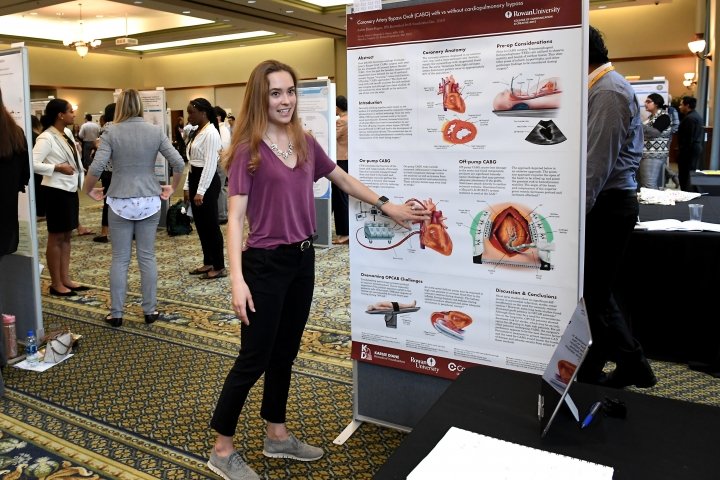
The Rowan University Student Scholars Symposium April 25-26 showcased hundreds of research projects from virtually every college and school at the university.
Formerly focused on science, technology, engineering and mathematics research and called the “STEM Symposium”, the program, in its 21st year, expanded to include student work in all Rowan academic disciplines.
Program organizer Dr. Gregory Hecht, associate professor in the Department of Biological Sciences, said more than 500 students developed 229 presentations for the program, many of which evolved from months of research.
Hecht that said since founding the program in 1998, he has witnessed a flowering of creativity across disciplines that has accompanied Rowan’s development from a well-respected state school to a doctor-level, Carnegie-classified research university.
“We’re still heavily based in the STEM areas,” he said of RUSSS, “but we have disciplines that were never represented here before including law & justice, theatre, history and religion.”
One major that straddles the worlds of art and science perhaps more than any other is Rowan’s Bachelor of Fine Art in Biomedical Art and Visualization. One of the few undergraduate disciplines of its kind in the country, the program was well-represented at RUSSS by senior Karlee Rogers.
Rogers, who holds degrees in biology and bio-chemistry from Rowan, attended Cooper Medical School of Rowan University for two years before deciding to follow her real passion – art and design at the nexus of medicine.
Her poster included artwork she created from photos and live sketches that she took during a direct observation of an open-heart surgical procedure. The poster illustrates a machine that pumps blood used during a traditional “on-pump” cardiac by-pass surgery, in which the heart does not beat, and a cut-away to a heart that is stimulated so a portion continues to pump during the surgery, a newer procedure referred to as “off-pump.”
“Patients who are high-risk for stroke can do better with the off-pump procedure because there’s less of a risk of damage to blood components from the pump,” she explained.
Rogers said there is a good market for medical illustrators who understand the science and who can create presentations, web sites and other materials that represent the human body and medical procedures.
Nearby, junior Sydnee Gould, a translational biomedical sciences major, presented a poster explaining her research into the herpes simplex virus.
Her work relates to drug therapy development and, should it be successful, could lead to the creation of a topical application that prevents the transmission of the herpes virus but would not prevent conception.
“The herpes simplex virus affects a significant percentage of the population and this would allow for safer sexual practices,” Gould explained. “If a woman wants to get pregnant but her partner has the virus, she could use this cream to prevent infection while allowing for pregnancy.”
Ultimately, Gould said, she seeks to earn her M.D. and a master’s degree in public health for a career in which she could continue this type of work.
